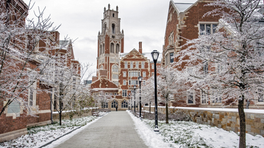Admission Rates for Select California Universities
- Ryan Murphy

- Apr 30, 2016
- 3 min read

Last week, I wrote about trending acceptance rates for select colleges and universities in Texas. And a few weeks ago, I wrote about acceptance rates for the Class of 2020 for the Ivies, Stanford, MIT, and UT-Austin.
This week I will provide general acceptance rates for select universities in California. These schools also have followed a similar trend that I noted last week and the week before. In other words, admission rates were lower each year than the previous one, and for the most part, more students are applying. (Do I sound like I’m repeating myself yet?)
University of California System (Berkeley, Davis, Irvine, Los Angeles, Merced, Riverside, San Diego, Santa Barbara, and Santa Cruz)
This public university system is the most prestigious in the country, and more students are applying to it. There are two great resources that show the increases in applications. One is a recent article from the Los Angeles Times, which states that for Fall 2016, the whole UC system received 6.4% more applications than it did in 2015. The biggest increase for an individual school was UC-Merced, which saw a 13.5% increase in applications (a modest 19,932 grew to 22,632). While it may seem unimportant, this jump in applications shows that more students are considering less known campuses for their college careers.
Another great resource comes from UC itself. They have a wonderful database of admissions statistics. You can look at an individual school’s admission statistics for the past 20 years, or you can look at the admission statistics for the entire UC system.
Notably, UC-Berkeley from 2005-2015 saw a steady increase in applicants--approximately 5,000 per year. In that time span, the applications more than doubled from 37,014 to 78,893 and the acceptances trickled up from 9,828 to 13,320. So you can see that Berkeley is trying to accommodate the massive influx of applications, but it is still not enough to mollify the competitive nature of applying.
USC (Los Angeles)
University of Southern California matches the admission trend, and a recent article on USC News shows that acceptance rates from 2014 to 2016 decreased from 17.8% to 16.5%. Looking back to 2011, the acceptance rate was 23%, so within five years the acceptance rate has decreased nearly 10%. However, on a more recent year-to-year basis, the changes are not as drastic.
Pomona College (Claremont)
While Pomona does receive more applications each year, the increases are not as large as those of the other schools listed. For example, as stated on Pomona’s website, the college received 8,091 applications for the Class of 2019 and 8,104 applications for the Class of 2020. That’s 13 more students, a change that should have nearly zero effect on the acceptance rate. However, Pomona accepted fewer students for the Class of 2020, so the acceptance rate dipped from 9.76% to 9.1%.
California Institute of Technology (Pasadena)
Caltech doesn’t provide too much information about its admission statistics, but its admissions website states the acceptance rate for the Class of 2019 was 9%.
Final Thoughts
Just like I said last week, and the week before, you can see that more students are applying to college each year. These rising numbers should not make you too stressed out, but they should remind you to focus your college admissions applications to schools that are best suited for you. Don’t simply apply to colleges and universities to see how well you would do; actually research and understand what makes a school the best fit for your needs.
Here at B2A, we are happy to help students determine majors and colleges most appropriate for their needs. Admission season is about to go into full swing, so don’t miss out on our great programs and services!































